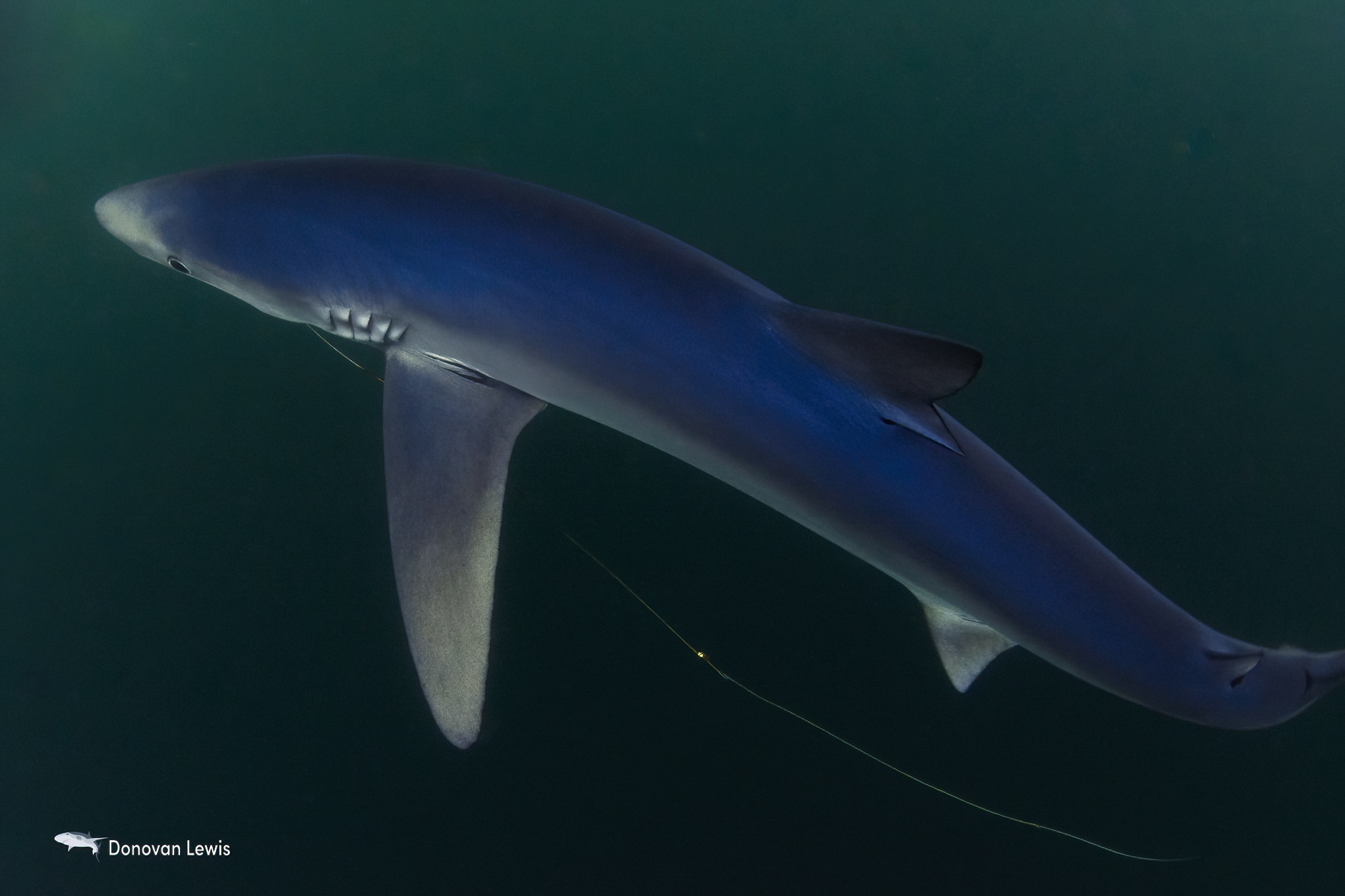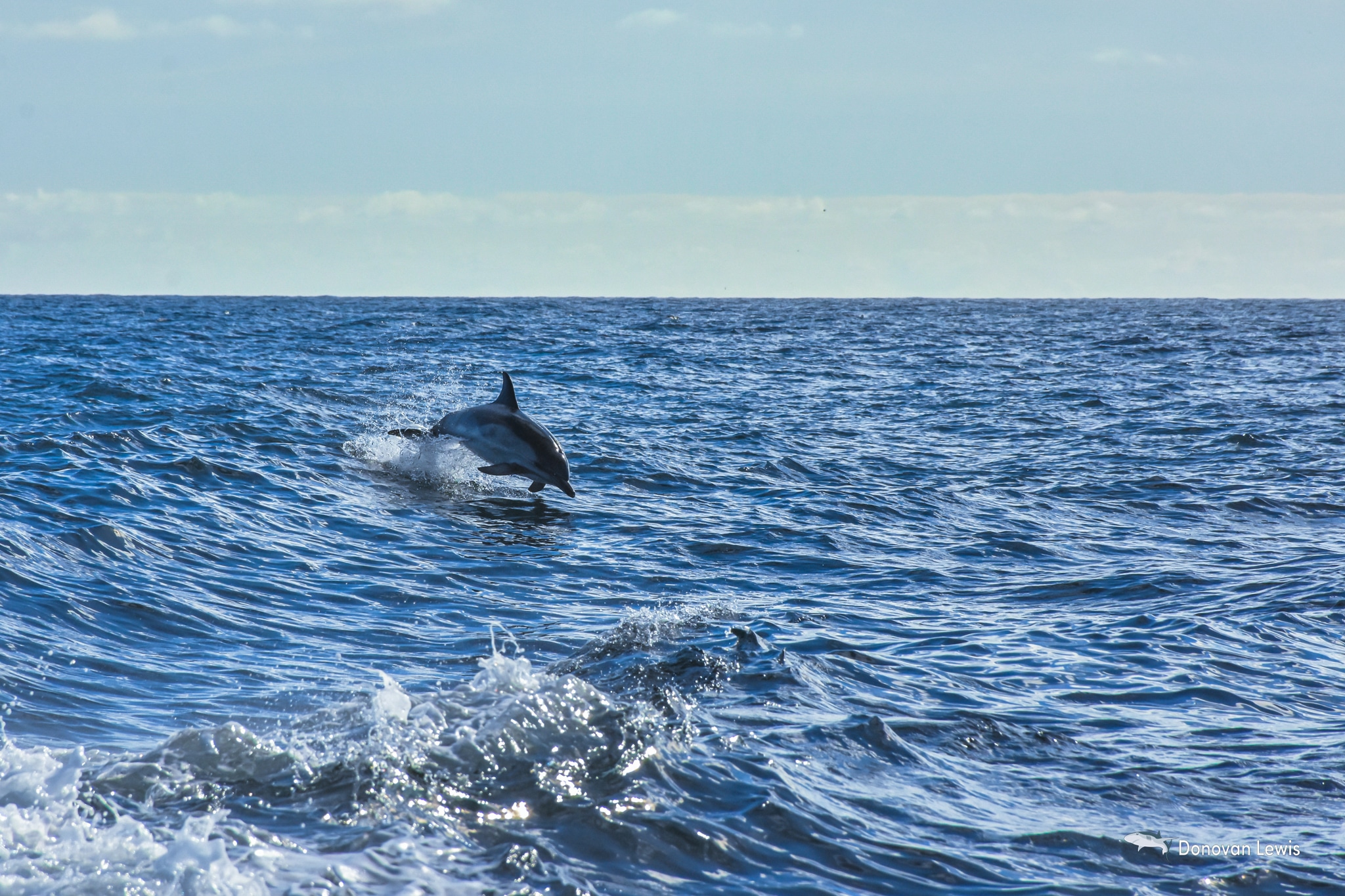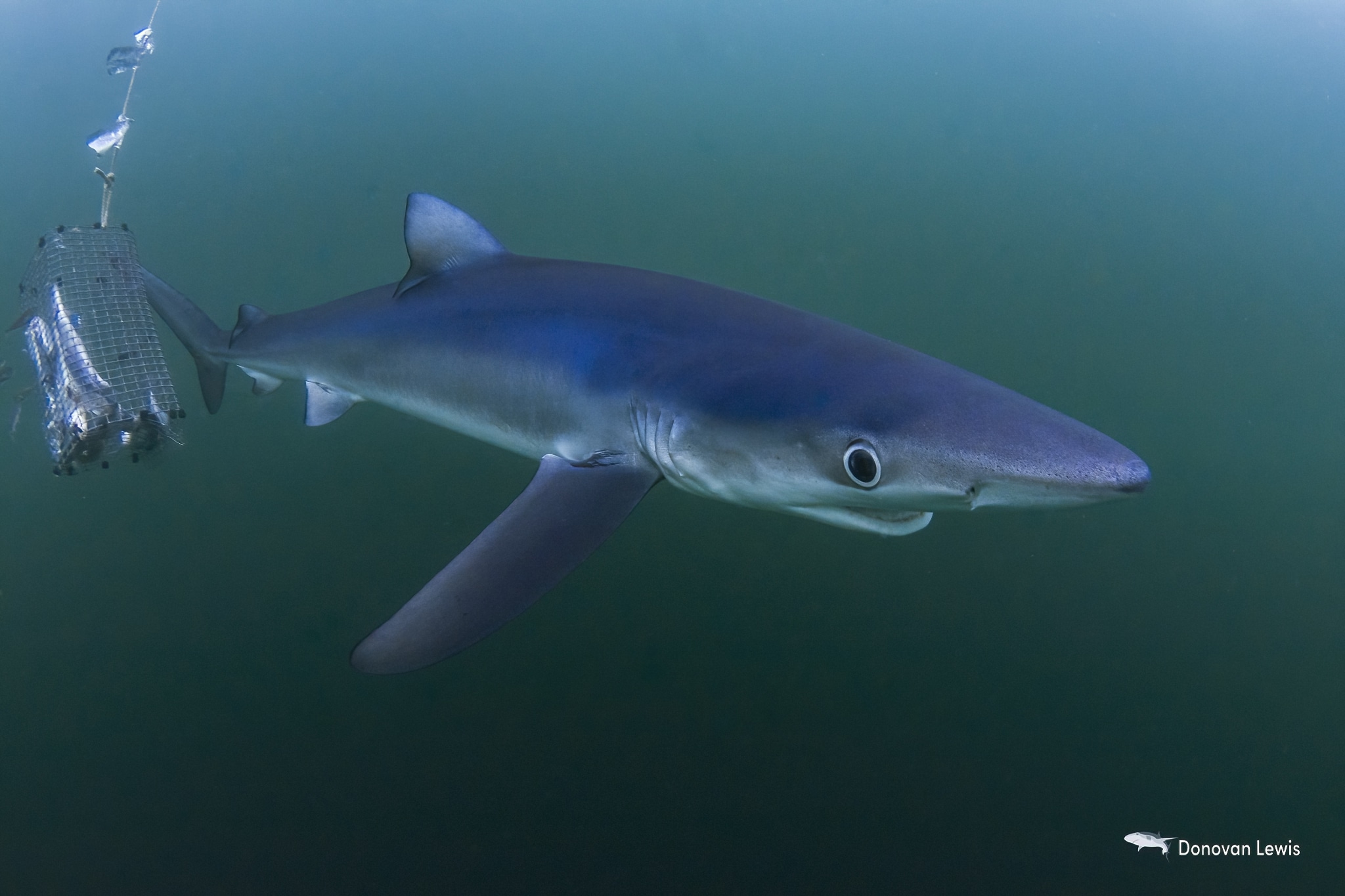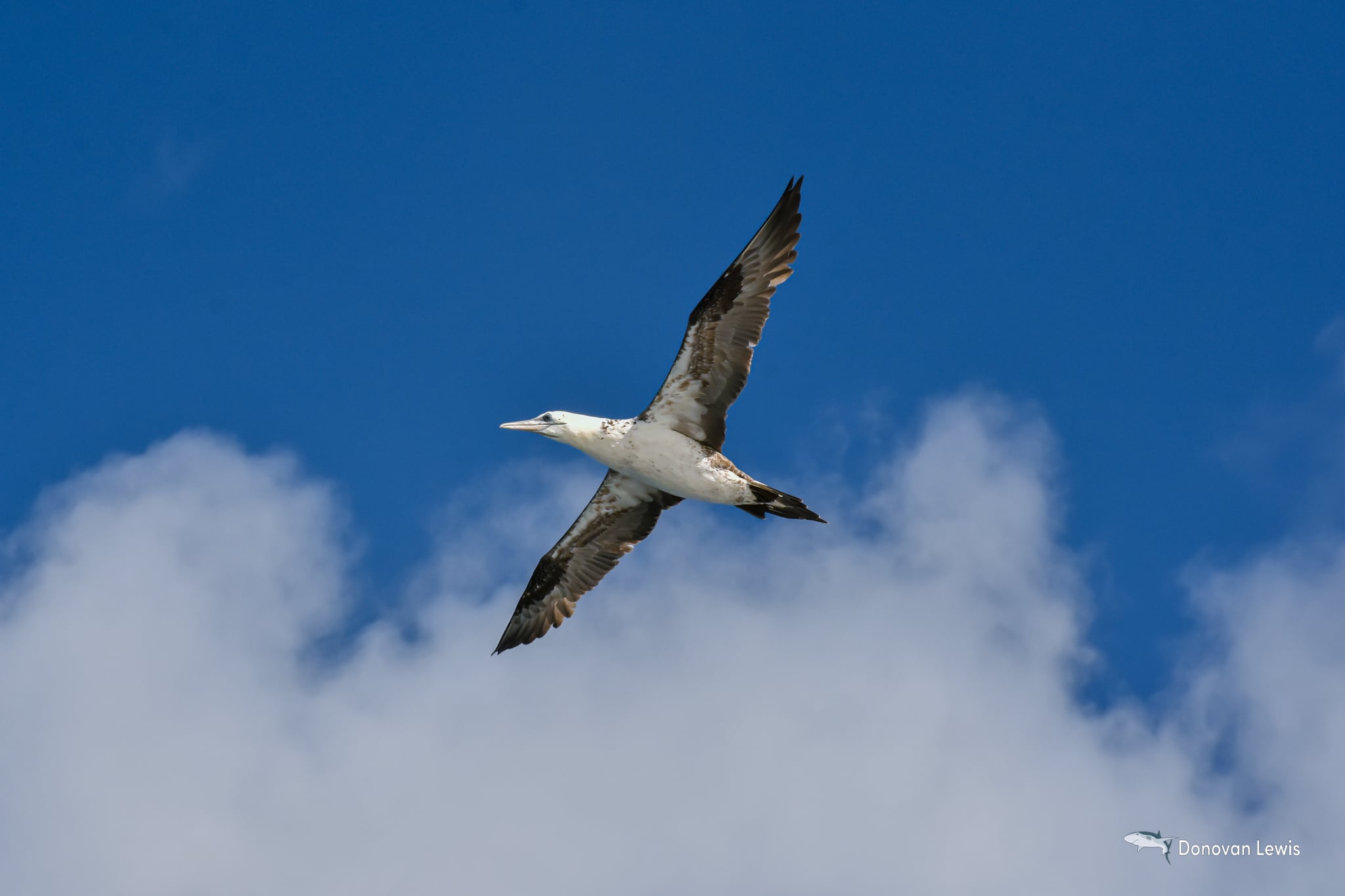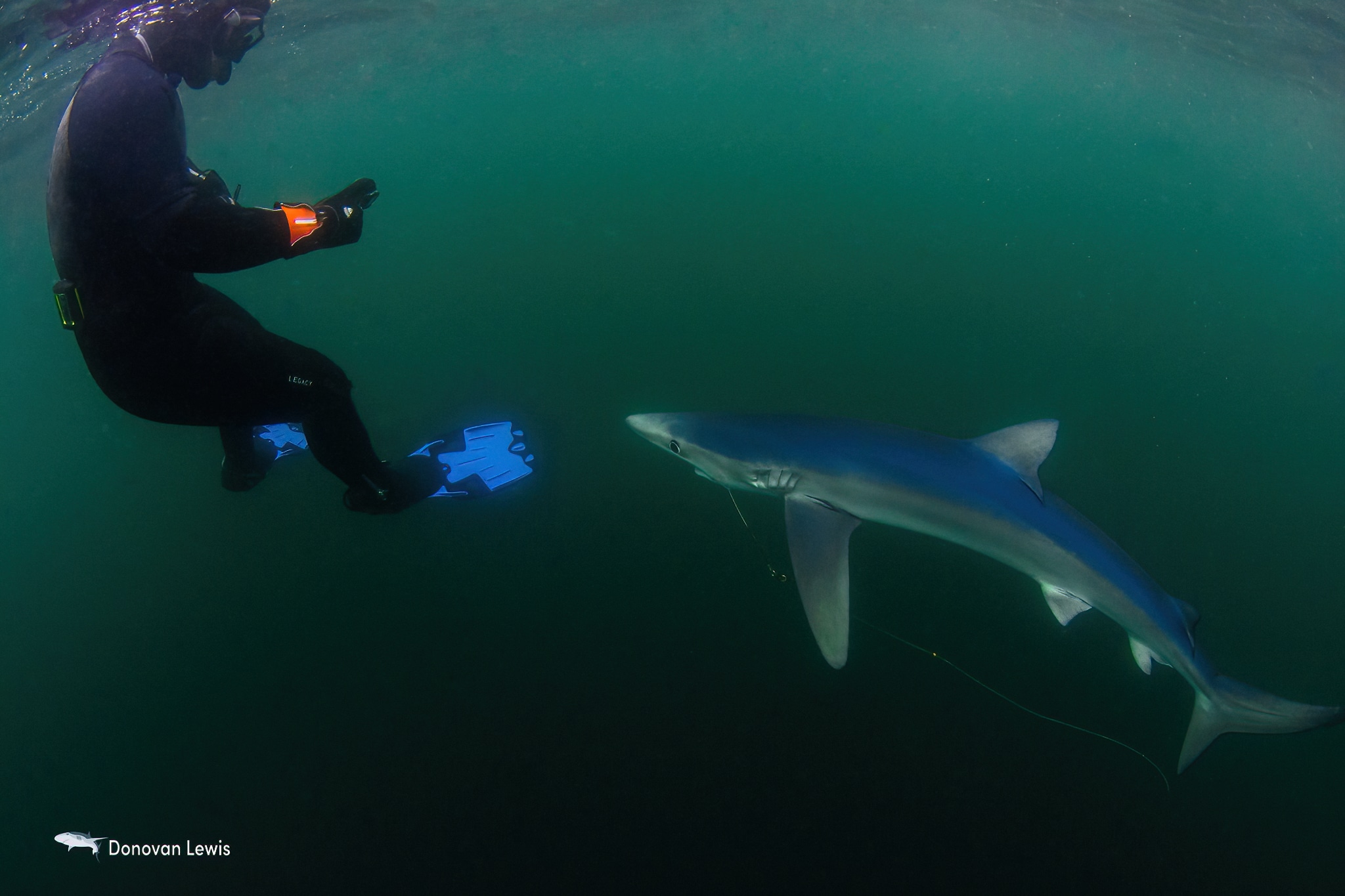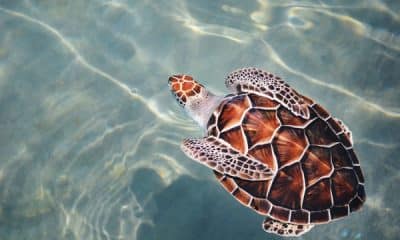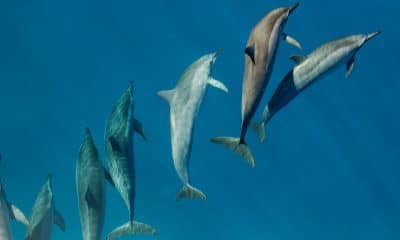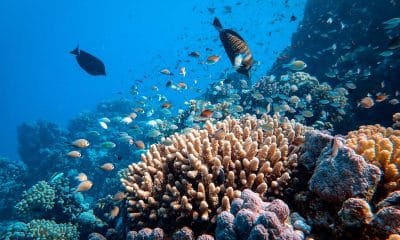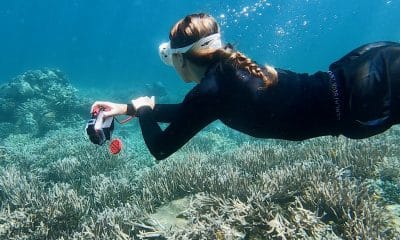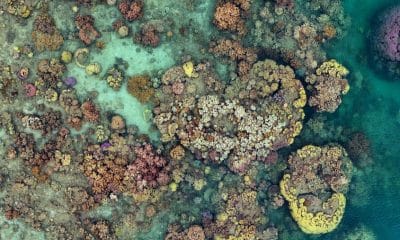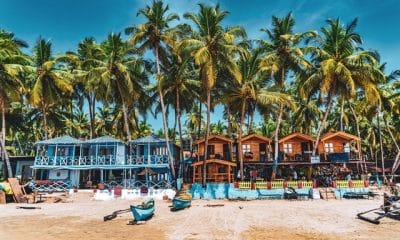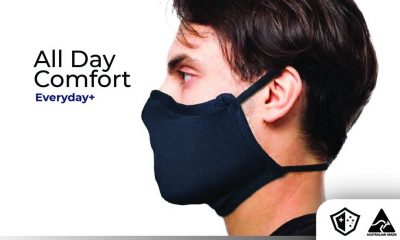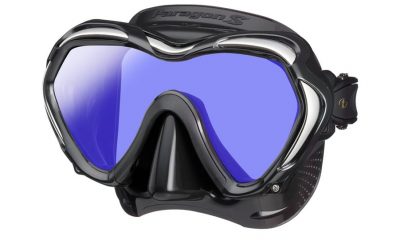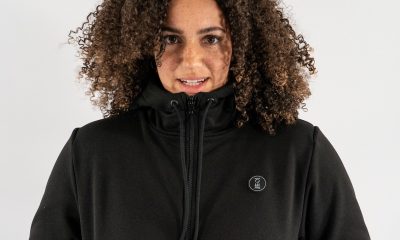Blogs
A day in the blue with Celtic Deep

A Guest Blog by Donovan Lewis
There are some truly breath-taking wildlife experiences to be had on our planet and some would be surprised what you can experience right here in the UK. For years I’ve dreamed of swimming with a true open ocean wanderer in the UK, the Blue Shark.
Blue Sharks are a true open ocean specialist, agile and adaptable, they specialize mainly on eating fish such as Herring, Sardine and Mackerel, but they do make vertical migrations to the depths to feed on Squid in deeper waters. It has been shown that these incredible Sharks spend a large amount of time in deep water riding currents and thermoclines but will still return to the surface waters to prevent body cooling. Unfortunately, the Blue Shark is the most heavily fished Shark species in the world, which has unfortunately led to this species being put on the IUCN List of Threatened Species and is currently listed as Near Threatened.
Back in 2017 I was lucky enough to do a dive with Blue Sharks when I was out in South Africa with Shark Explorers, who are based in Simons Town, False Bay. It was actually on this dive where I decided I really wanted to be a wildlife photographer/cameraman. Ever since this dive I have been itching to get back in the water with these truly incredible animals, but not only did I want to be back in the water with them, but I also wanted to introduce my Fiancée Charlotte to them as well. Well in September of 2021 I managed to do just that.
Now unfortunately, our trip which was originally booked for mid-August had been cancelled due to bad weather, which is what tends to happen when diving in the UK, obviously going out in a large swell is no fun for anyone so we eagerly waited for our trip to come up a few weeks later.
Myself, my partner Charlotte, and a friend from work Dom, set off from Ellesmere Port at around 1:00am to be in Pembrokeshire in time for ropes up at 8:00am, we had to be at the dock for 7:30am to put all our equipment on the boat before departing for the deep. We arrived an hour early, so we had a quick rest in the car and got into our Wetsuits ready for the trip and placed all our Camera and Snorkelling equipment beside the dock ready for the boat’s arrival. Here we were met by others on the trip with the likes of Francesca Page and David Millard who are both artists and Underwater Photographers as well as Kaushiik Subramaniam and Robin Fischer, both of whom are underwater Photographers and filmmakers. This is also where we of course met the Celtic Deep crew, Richard who is the one of the founders of Celtic Deep and also the Maldives Whale Shark Research Program, Liam an underwater Photographer and Filmmaker and Celtic Deep Deckhand, and Emma a Marine Biologist doing research on Sharks and other marine life in the deep.
At 8:00am we departed for the deep, passing Skomer and Skokholm Island on our way out, before the trip we were told that they had been recently seeing a large amount of dolphin and bait balling activity, and nature really didn’t disappoint with huge numbers of Common Dolphins and the calves Bow riding the boat, Emma who is doing some Research and conservation work on board took this opportunity to count the dolphins and their calves for local research. The dolphins seemed to come from every direction with seeming endless numbers of them. We got to witness several Bait balls on the way out with Dolphins herding fish against the surface from below along with Gannets diving from above and the odd Skua flying in to investigate the commotion.
After around 2 hours of steaming out we finally reached the area known as the Celtic Deep, this is an area between the UK and Ireland and is an area in the seafloor that reaches a depth of around 100 Metres, this is an area that attracts a whole range of open ocean predators from, Dolphins, Tuna, Blue Sharks, occasional Mako Sharks and even Whales.
Once we had reached the Deep Richard started chumming for the Sharks, it was a mixture of Herring and other fish which he mixed with Salt water and threw the fluid overboard. They also placed a metal Cage with Herring inside around 3 Metres below the surface and attached to the rope were pieces of Tin foil and other reflective material in what Richard referred to as a Shark Mobile, this was used to keep the Sharks interested and keep them around the boat. Liam an Underwater Photographer and part of the Celtic Deeps Crew jumped in to watch the deep water and surrounding area for approaching Sharks to let everyone know to start getting ready if one approached the boat.
As Richard Chummed for Sharks, Emma started setting up her research, she had a machine on board that was taking water samples from around the boat and sending it into a container where she was taking a number of samples for environmental DNA sampling, essentially this method is used to take a large sample of water from any given area and analyse the sample for traces of DNA that are left in the water column by any animals that have been in that area recently. This is used to gain a potential idea of what has been around recently and potentially in what number, it was amazing to see such work taking place on board the boat and with all members of the crew helping however they could.
Whilst we were waiting for the Sharks, Charlotte and I were sat facing each other chatting, but we were constantly looking over each other’s shoulders just in case one of us saw something behind the other we could let each other and the rest of the boat know, mid conversation I, by sheer luck, happened to look at a spot of Water where right at that moment a Minke Whale appeared and took a breath. Minkes are known to be Shy, so it didn’t hang around long before diving again to re-surface some 100metres away seconds later. Now due to promises being given of animals to be seen through my time diving I always go on trips like these with the notion that we won’t see anything and then that way if we do see something its always so much better, and we were not disappointed.
After 90 minutes or so of waiting, a fishing rod that had been deployed with a herring on a line to a depth of around 30 metres started screaming, David turned and said “That’s a Shark” which Richard confirmed, seconds later Liam’s head came up and he shouted “Shark! Shark! We have a Shark” it was then I saw the tell-tale electric Blue colour of a Blue Shark. Myself, Charlotte, and Dom had been in our wetsuits since 7am so were told to get ready as we were going in first.
We finished gearing up and jumped in, the water visibility was at most around 5 metres so we couldn’t immediately see the Shark but then out of nowhere the unmistakable silhouette of a shark, came into view its deep Blue electric coloration glowed brightly, its curiosity was equaled by its cautious nature and we were told not to duck dive down to the sharks and to stay on the surface at first to allow the animals to gain confidence in us. Therefore we went in small groups at first to make sure we don t scare the animal away, but once everyone had been in, we would then be able to all get in the water. The Shark made continuous passes getting closer to us and checking us and the camera out with its large endearing eyes. At one point I looked over to Charlotte to make sure she was OK when she told me that that the Shark was on the bait cage, I put my head down to have the shark literally 2 inches in front of me, it came in close to have a look and went over to Charlotte, with her literally having to arch her body to get out of its way. After around 15 minutes Richard called us back to the boat as the second group were ready to get in, we swam back to the boat with smiles, hugs, and high fives to go round.
We then watched as the second group swam with the Shark for few minutes before the Shark decided to leave, at first, we were a little confused as to what caused it to leave before noticing a hub of activity in the distance, it was a pod of Common Dolphins heading in our direction. Richard told the group “Dolphins, behind you! Heads Down!” The group lowered their heads and were met by a pod of dolphins swimming all around them, Francesca said when she got out that she had never seen a dolphin underwater and you could see how happy she and the rest of the group were through their excitable expressions and happy tears.
Unfortunately, due to the Shark leaving we did have to wait around for 30 minutes before getting back in but it so worth the wait with not one but two Sharks showing up. There was a large female around 2.5 metres in length and a smaller 1.5-2 metre male. It was noticed almost immediately by both Liam and Emma that the large female had a hook lodged in her mouth and was also trailing fishing line behind her. Emma stated that the hook was barbless which is what should be used for recreational Shark fishing because if the Shark escapes, then the hook will fall out, but unfortunately the line that was attached was creating drag thus keeping the hook firmly in place. The large female may have had a large hook in her mouth, but this didn’t influence her curiosity as she just couldn’t get enough of us, she did pass after pass bumping into cameras as she went.
After what felt like mere minutes was actually around 40 we were asked to get back on board as the sun was beginning to hang low and we needed to head back to port, but before we did Emma grabbed a knife and went after the large female shark in the hopes of freeing her from the line that was attached to the hook, Robin followed to get some footage for his Masters film that he was making, 10 seconds later Emma surfaced full Rocky style with the her hand up cheering with the line hanging from her hand. Emma had succeeded in freeing the shark, Emma stated that with the line now free it will allow the barbless hook to fall out in its own time which was a huge relief to hear.
The journey back took around 2 hours with the sun setting over the smalls lighthouse the most westerly lighthouse in the UK. Me, Charlotte, and Dom were all aware that when we get back to shore that we would still have around 5 hours of travelling before we got home. Once back on shore we said our goodbyes and made our way for the car. The drive was clear, with me and Charlotte doing half a journey each, we returned home at 1:00am a near full 24 hours after leaving to head down but the exhaustion was worth every minute spent with the incredible animals and crew alike.
In summary the day out with Celtic Deep was incredible, a day where UK Marine life was a true spectacle, we experienced something that up until recently not many people knew about in this part of the UK, a place where Ocean wandering predators gather to take advantage of rich feeding grounds. The wildlife, facilities and service were 10/10 with crew that were accommodating and professional from start to finish and is somewhere that I am keen to return to and look forward to another day out in the Blue with Celtic Deep.
For more information about Celtic Deep visit their website by clicking here.
Blogs
The Suit Ocean Team leads the Ultimate Curacao Snorkeling Adventure
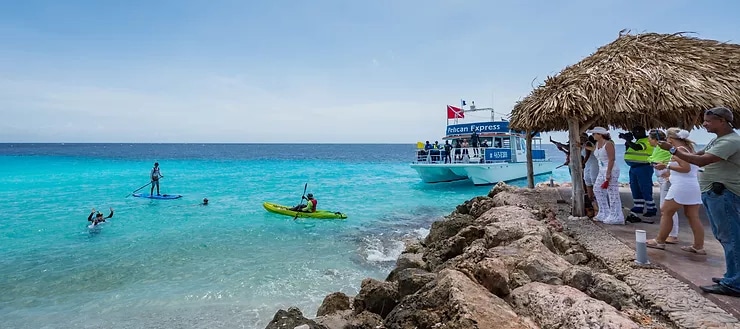
As passionate residents of our Dutch Caribbean Island, we must congratulate The Suit Ocean Team for creating more awareness about the importance of protecting our beautiful fringing reef systems in Curacao.
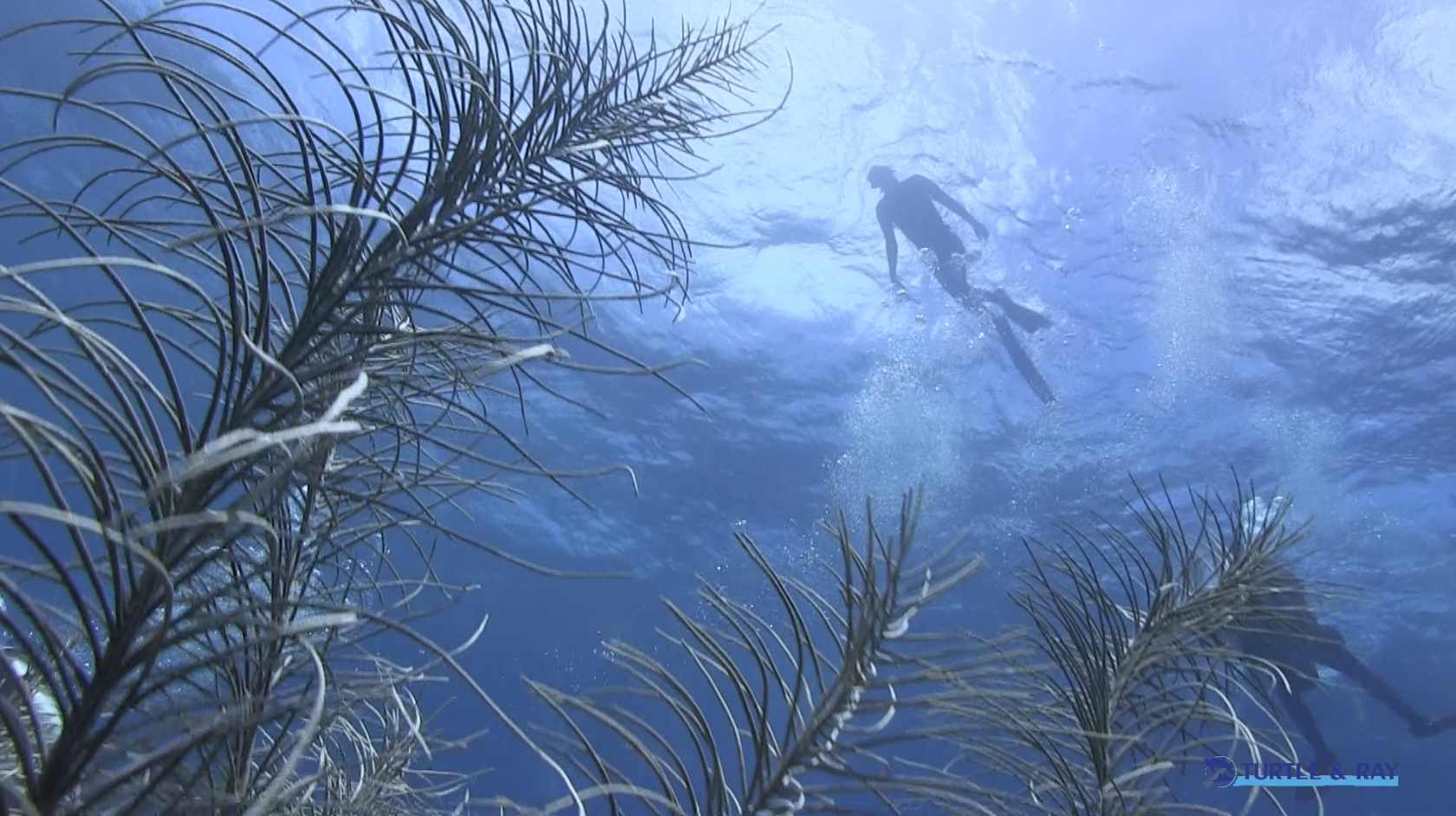
The film, Curacao Underwater Kunuku (Kunuku is Papiamento for Garden), not only documents this ultimate snorkeling adventure showing you how easy it is for everyone to access and enjoy a snorkel or diving experience, but it also showcases the interaction between man and nature, highlighting the beauty of underwater life while promoting conservation, preservation and the need to protect these vital habitats.
These are the key ingredients to this beautiful short film documentary. Watch NOW and please enjoy our “CURACAO UNDERWATER KUNUKU”.
This film, produced by the Lawrence Mensa Foundation (LMF), is also available in multiple languages including: Spanish, Papiamentu, Dutch, Portuguese and German.
Blogs
8 Unique Places to Go Snorkeling in Europe
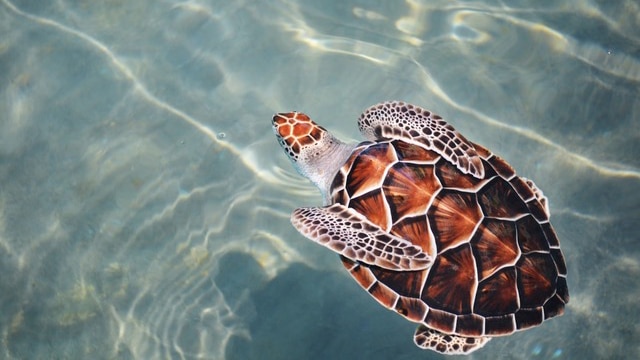
Snorkeling in Europe brings to mind golden sands dotted with beach umbrellas, clear waters, and rocky landscapes busy with Mediterranean fish life. Europe offers all of that, but it also offers so much more for snorkelers. Among Europe’s diverse countries, you can find impossibly bright blue lagoons, idyllic islands, and pristine marine reserves that host thousands of sea turtles and playful seals. You can snorkel over a sunken Roman city and explore one of the world’s premier marine megafauna hotspots. Ready for a summer vacation? Get inspired with our round-up of 8 unique places to go snorkeling in Europe.
Comino, Malta
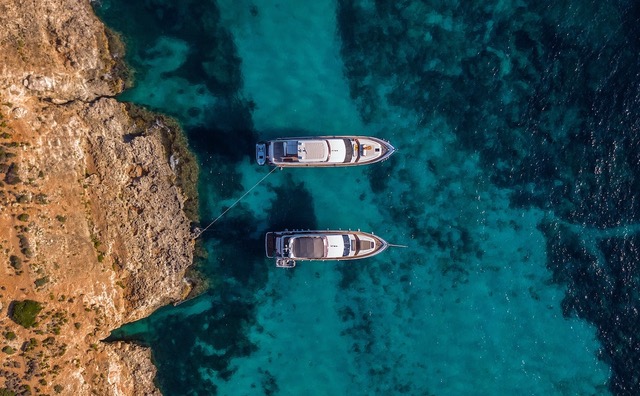
Sitting between the islands of Malta and Gozo, Comino Island is a paradise for snorkelers and divers alike. This tiny island hosts the brightest blue waters in the Maltese Islands and offers fantastic snorkeling among sheltered inlets and caves busy with diverse marine life.
Comino is best-known for hosting the Blue Lagoon; a bucket-list destination with crystal-clear waters and striking rocky landscapes. It is the perfect place to go snorkeling, take a hike, or simply marvel at the gorgeous scenery.
Medes Islands, Spain.
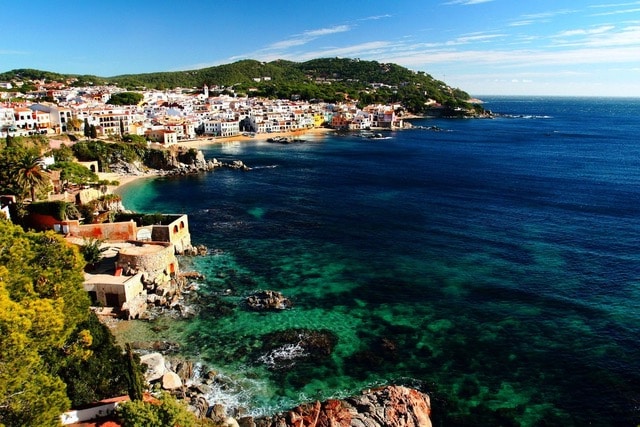
With over 500 dive sites and seaside destinations all along its coastline, Spain draws tourists from around the world. This vibrant country is one of Europe’s top vacation spots.
The Costa Brava in northeastern Spain is home to some of the most famous snorkeling spots in the country, one of which is the Medes Islands. This small archipelago of seven islets off L’Estartit is one of the best marine reserves in all of the Mediterranean.
Fishing was banned at the Medes Islands over 30 years ago, which has allowed marine life to flourish there. Seagrass meadows and rocky areas busy with fish await. A visit to this exceptional marine ecosystem is a must if you are visiting Spain.
Zakynthos, Greece.
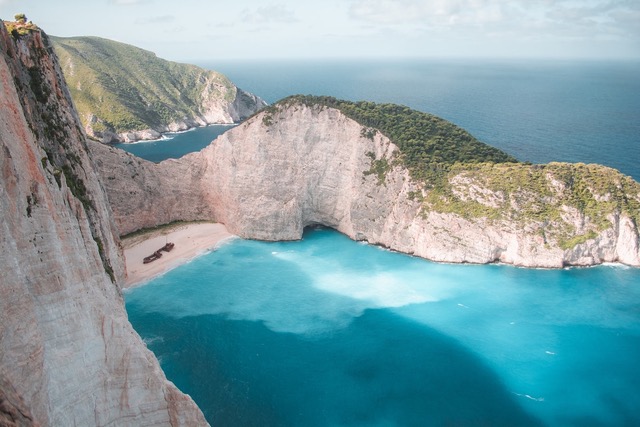
If you love sea turtles, Greece should be top of your list of places to go snorkeling in Europe.
Zakynthos is home to Marathonisi Island, also known as ‘Turtle Island’. This small island sits within the National Marine Park of Zakynthos and is a vital breeding ground for loggerhead sea turtles. The National Marine Park of Zakynthos was created in 1999 to protect these turtles, plus rare Mediterranean monk seals, which give birth to their young in Zakynthos’s secluded caves.
Marathonisi, nearby Cameo Island, and Zakynthos, are the top places in Europe to swim with turtles. In the summer months, thousands of loggerhead turtles visit the area to lay their eggs and you can go snorkeling with them.
Lundy Island, United Kingdom.
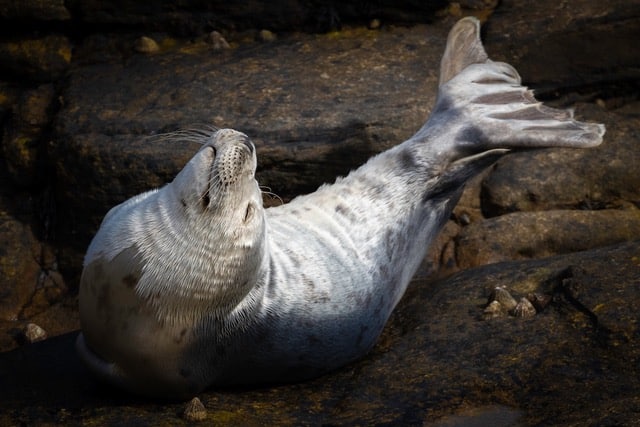
Snorkeling with seals is bound to leave a smile on your face. These cheeky animals are known for getting up close to snorkelers, checking them out, and occasionally nibbling fins.
Lundy Island is one of the best places to go snorkeling with seals in Europe. This island sits just 12 miles off the coast of Devon and hosts a breeding colony of Atlantic grey seals. The seals can be found playing in the surf and lounging in the sunshine at various points around the island.
Grab your snorkeling kit and dive in. Below the water, you will find shallow sunlit kelp forests, a variety of reefs, sea caves, and pinnacles. Lundy is a popular place for diving, but you will see plenty of marine life from the surface, including bright cup corals, anemones, fish, and hopefully seals.
Sunken City of Baiae, Italy
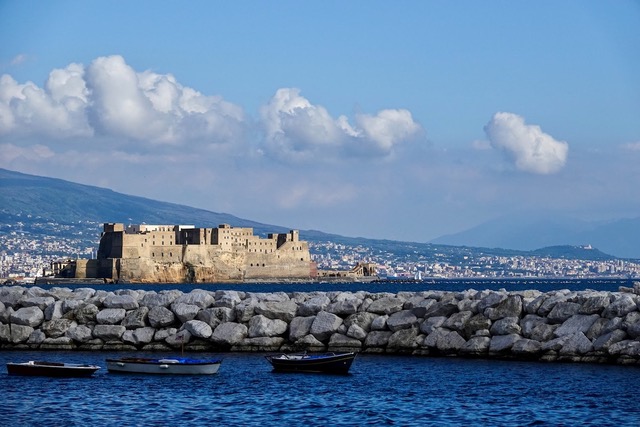
Not every great snorkeling experience is about marine life. In Italy, you can snorkel over ancient Roman ruins.
Two thousand years ago, Baiae was the destination for rich Romans to escape the city and relax by the seaside. Countless emperors and merchants flocked to Baiae’s shores every year, until tectonic activity forced this thriving city underwater.
Today, Baiae is an intact underwater city and one of the top highlights of snorkeling and diving in Italy. Observing these ruins is a breath-taking experience that brings history to life. There are Roman statues, a thermal spa, paved roads, and pillars dating back to the 1st century BC.
Corsica, France
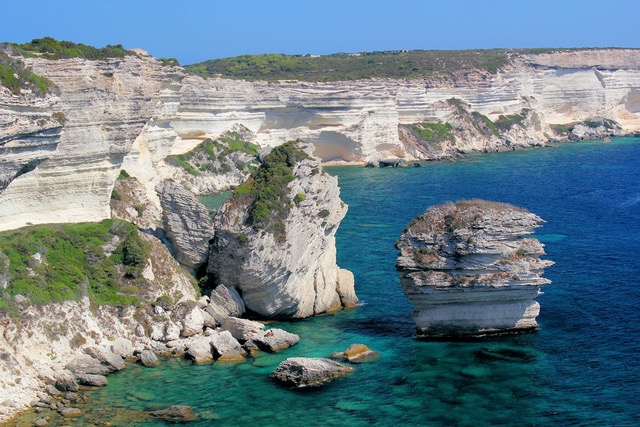
Corsica is renowned for its crystal-clear waters and shallow bays perfect for snorkeling with your kids.
This gorgeous island in the Mediterranean Sea boasts dramatic cliffs and white-sand beaches that hosts a wealth of accessible snorkeling spots. There are rich seagrass beds and rocky landscapes, plus small hidden coves dotted around the island. All of which host a diverse array of marine life, including huge schools of fish, octopi, moray eels, and starfish.
Corsica’s calm waters make it ideal not just for kids, but also for beginner snorkelers and those who want an easy time in the water. With water temperatures reaching up to 26 °C, plus water visibility of up to 30 meters, Corsica ticks the boxes for a laidback beach and snorkeling vacation.
Traun River, Austria
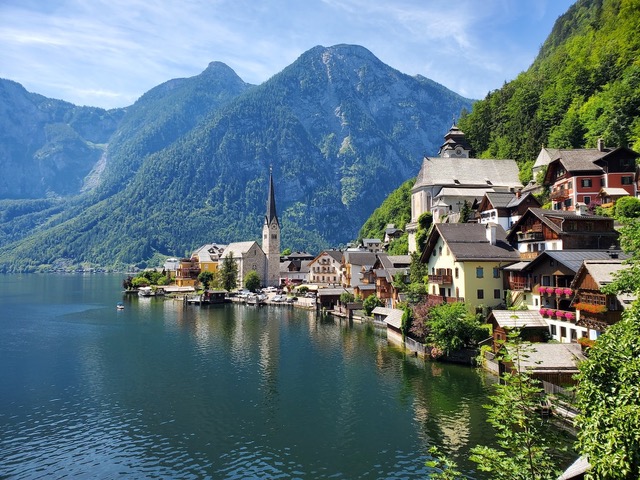
You might not think of Austria for snorkeling, but this land of iconic mountains and lush green landscapes has pristine lakes that attract divers and snorkelers every year. Away from the lakes, you can go snorkeling in spring-fed rivers that gleam in the sunshine.
Forget about floating on the surface when you go river snorkeling. At the Traun River in Upper Austria, river snorkeling involves rock jumping, canyoning, and some relaxed floating downstream. Along the way, you can explore interesting rock formations, underwater caves, and a waterfall, and meet freshwater fish life. This is also an excellent spot to go drift diving.
The Azores, Portugal
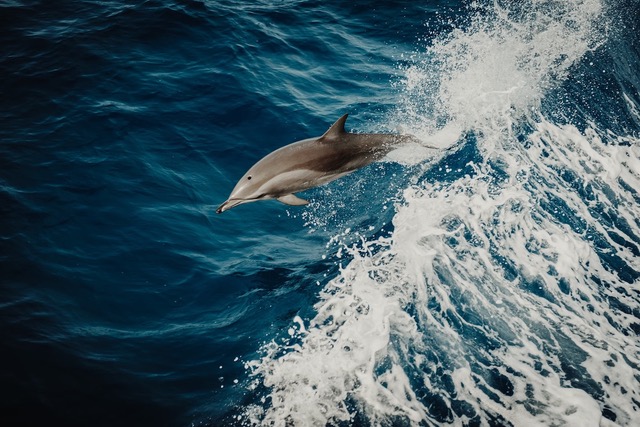
Sitting in the middle of the Atlantic Ocean and surrounded by endless blue waters, the Azores is a mecca for marine megafauna.
These famous islands host a remarkable amount of marine life, including more than 27 whale and dolphin species, mobula rays, and sharks. Snorkeling at the Azores is a great way to experience this wealth of life. You can swim with dolphins and snorkel among dozens of mobula rays and big pelagic fish.
And if you have a scuba certification, you can also go diving with mako and blue sharks. With water visibility reaching up to 60 meters, the Azores is incredible whichever way you choose to explore.
Kathryn Curzon, a conservationist and dive travel writer for SSI (Scuba Schools International), wrote this article.


